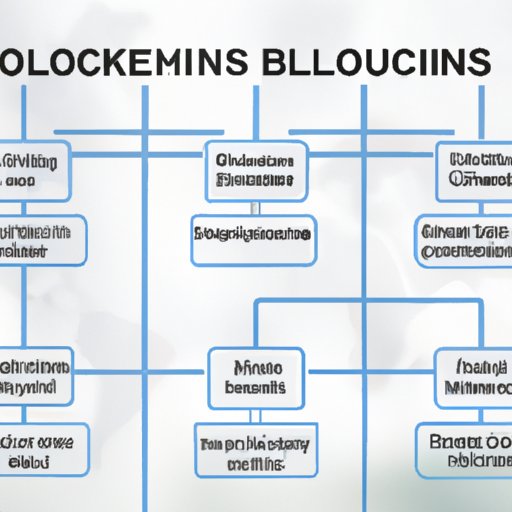Introduction
Blockchain technology is a digital ledger system that records and stores information on a distributed network. It is an immutable, transparent, secure, and distributed form of record keeping that has been gaining popularity in recent years due to its ability to improve efficiency and reduce cost in many industries. By leveraging the power of cryptography and decentralized networks, blockchain technology allows for the transfer of value and information without the need for third-party intermediaries. This makes it an attractive option for businesses looking to streamline their processes and reduce overhead costs.

Overview of the Different Blockchains
The different blockchains can be broadly classified into two major categories: public blockchains and private blockchains. Public blockchains are open to anyone who wishes to participate and are generally permissionless, meaning that anyone can join and take part in the network. Private blockchains, on the other hand, are permissioned and require users to be granted access by the network administrators. In addition, there are hybrid blockchains which combine aspects of both public and private blockchains.
How Different Blockchains Work
At a fundamental level, all blockchains operate in a similar manner. Data is stored in blocks which are linked together to form a chain. Each block contains a cryptographic hash of the previous block, forming an immutable chain of data. When new data is added to the chain, it is broadcast to the entire network and each node verifies the validity of the transaction before adding it to the chain. This ensures that the data is accurate, secure, and unalterable.
Types of Blockchains
There are several different types of blockchains available today, each with its own unique characteristics and use cases. The most common types of blockchains include public blockchains (such as Bitcoin and Ethereum), private blockchains (such as Ripple and Hyperledger Fabric), and hybrid blockchains (such as Quorum and Corda). Each type of blockchain offers different benefits and drawbacks and is best suited for specific applications.
Understanding the Mechanics of Different Blockchains
The mechanics of different blockchains are based on the consensus mechanism they use. Consensus mechanisms are algorithms that are used to ensure that the data stored on the blockchain is accurate and valid. Some of the most popular consensus mechanisms include Proof of Work (PoW), Proof of Stake (PoS), and Delegated Proof of Stake (DPoS). Each of these consensus mechanisms has its own advantages and disadvantages and is best suited for different applications.

Exploring the Pros and Cons of Different Blockchains
Different blockchains offer their own unique advantages and disadvantages. Some of the benefits of using a blockchain include increased security, immutability, transparency, and decentralization. However, there are also some drawbacks to using a blockchain such as scalability issues, slow transaction speeds, and high energy consumption.

Case Studies: Examining Different Blockchains in Action
To better understand the different types of blockchains, let’s explore some case studies of how they are being used in the real world. Ethereum is one of the most popular public blockchains and is used for creating smart contracts and decentralized applications. Bitcoin Cash is a hard fork of the original Bitcoin blockchain and is used for peer-to-peer payments. Ripple is a private blockchain used by banks and financial institutions for quick and reliable transactions. Finally, Hyperledger Fabric is a permissioned blockchain used for enterprise applications.
Exploring the Interoperability of Blockchains
Interoperability is the ability of different blockchains to communicate with each other and exchange data. There are two main forms of interoperability: cross-chain interoperability and multi-chain interoperability. Cross-chain interoperability allows different blockchains to interact with each other, while multi-chain interoperability allows multiple blockchains to communicate and exchange data within a single platform.
What’s Next for Different Blockchains?
As the use of blockchains continues to grow, there are a number of areas that need to be explored in order to improve the technology. Security enhancements such as quantum-resistant algorithms are needed to protect against emerging threats. Scalability solutions are also needed to address the issue of slow transaction speeds. Finally, improvements in interoperability are needed to enable different blockchains to communicate with each other.
Conclusion
Blockchain technology has the potential to revolutionize the way we store, process, and transfer data. By leveraging the power of cryptography and decentralized networks, blockchains are able to provide secure, immutable, and transparent ledgers of information. There are a variety of different blockchains available today, each with their own unique advantages and drawbacks. As the technology continues to evolve, so too will the different types of blockchains and the potential for interoperability between them.
(Note: Is this article not meeting your expectations? Do you have knowledge or insights to share? Unlock new opportunities and expand your reach by joining our authors team. Click Registration to join us and share your expertise with our readers.)
